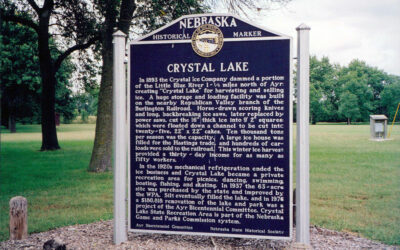In 1883 the Nebraska Mutual Aid Colony of Bradford, Pennsylvania, was organized to found a settlement in Nebraska. The Fulton family of Bradford were members of the colony, but when the location finally chosen was in Brown County (then far from any railroad), the elder Fultons had second thoughts. Their daughter, Frances Sims Fulton, decided to visit the site of the colony herself and report back to her parents. This journey resulted in a travelogue entitled To and Through Nebraska, which was published in 1884 by the Nebraska State Journal Company. The book not only covers Fulton’s visit to the colony site, but also records her extensive travels throughout Nebraska. One place Miss Fulton stopped was Fort Niobrara:
“I had fancied I would see a fort such as they had in ‘ye olden times’–a block house with loop-holes to shoot through at the Indians. But instead I found Fort Niobrara more like a pleasant little village of nicely built houses, most of them of adobie brick, and arranged on three sides of a square. The officers’ homes [are] on the south side, all cottage houses, but large, handsomely built, and commodious. On the east are public buildings, chapel, library, lecture room, hall for balls and entertainments, etc. Along the north are the soldiers’ buildings; eating, sleeping, and reading rooms; also separate drinking and billiard rooms for the officers and privates.
“The drinking and playing of the privates, at least, are under restrictions; nothing but beer is allowed them, and betting is punished. On this side is the armory, store-houses of government goods, a general store, tailor, harness, and various shops. At the rear of the buildings are the stables–one for the gray and another for the sorrel horses, about one hundred of each, and also about seventy-five mules.
“The square is nicely trimmed and laid out in walks and planted in small trees, as it is but four years since the post, as it is more properly termed, was established. It all looked very pleasant, and I asked the driver if, as a rule, the soldiers enjoyed the life. He answered that it was a very monotonous life, as it is seldom they are called out to duty, and they are only wishing the Indians would give them a chance at a skirmish.”
Neither Frances Fulton or her parents finally settled in Nebraska. On May 16, 1884, Frances married Rev. Frank Herbert of Lincoln and the couple moved to South Dakota.



